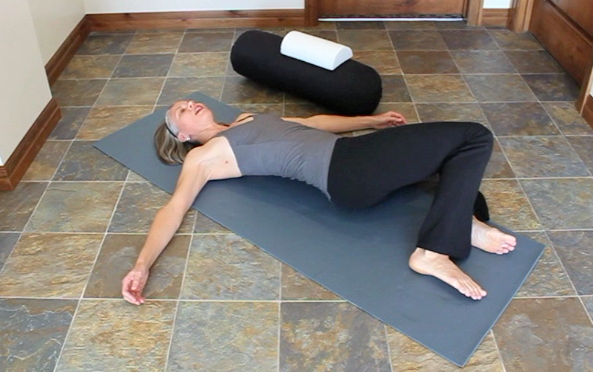Have you ever stepped back and observed your own habitual movement patterns? Movements that have been repeated so often that we don’t even notice anymore?
Have you ever found yourself talking with a friend about something exciting and noticed that your shoulders started creeping up toward your ears, or you find yourself stressed at work and the shoulders start creeping up again?
Have you ever noticed that you weren’t even breathing, and you were holding in your belly?
Or, maybe you clench your teeth and jaw.
These examples can be fairly easy to see if you start tuning in. Once you are aware, you can drop the shoulders back down, unclench your jaw, relax your belly, and take a big breath.
But what about the pelvic floor? Most of us don’t even know what or where this mysterious “floor” is, much less be able to tune in to notice what the muscles are doing.
The deepest group of the pelvic floor is comprised of 3 main muscles which are named according to location of attachment onto the pelvis: pubococcygeus, iliococcygeus, and coccygeus. As you can see from the picture, these muscle create a bowl-shaped “floor” to the pelvis.
Many of the clients that I work with have pelvic pain. One of the first take home tools I share with them is to teach them how to become aware of their pelvic floor muscles and begin to relax them.
Just like the shoulders, jaw and tummy, we tend to lift and tense the pelvic floor muscles. When these muscles are contracted, blood flow is not able to circulate. Without proper circulation, the health of the surrounding connective tissue, muscles, nerves and organs will decline, leading to pain and dysfunction.
Habit Change:
- Use your breath. On your inhale, imagine the “floor” relax and lengthen downward (this happens naturally when you pee. Next time when you pee, notice that as you sit on the toilet, the floor drops down as the muscles relax).
- Practice relaxing with 3-5 breath cycles. Imagine the ischial tuberosities (the boney parts you feel when you sit) move away from each other as your relax the pelvic floor on your inhale.
This may be difficult at first to feel relaxation and shift in the pelvic floor. It will take practice for the brain to begin to identify this area. Do not get discouraged. You are getting complete benefit by consciously breathing and thereby relaxing the whole system.
Begin to make a new habit: tune in an “drop it” 5 times a day for maximum benefit.












 RSS Feed
RSS Feed